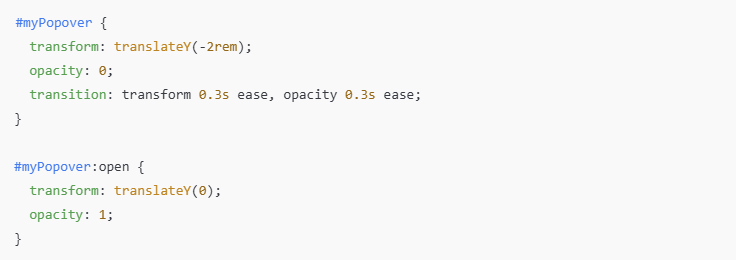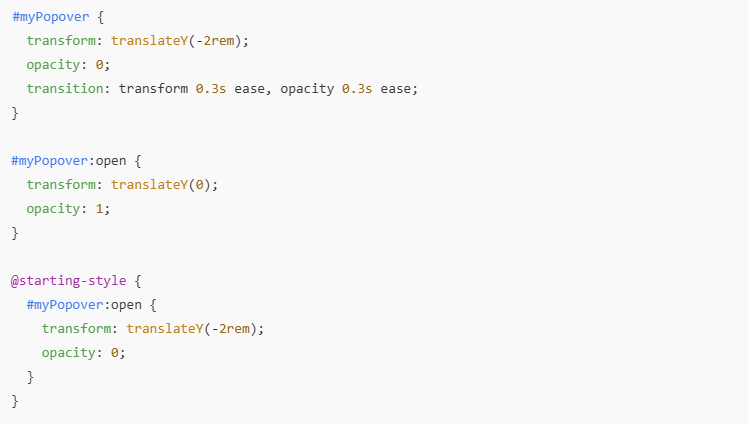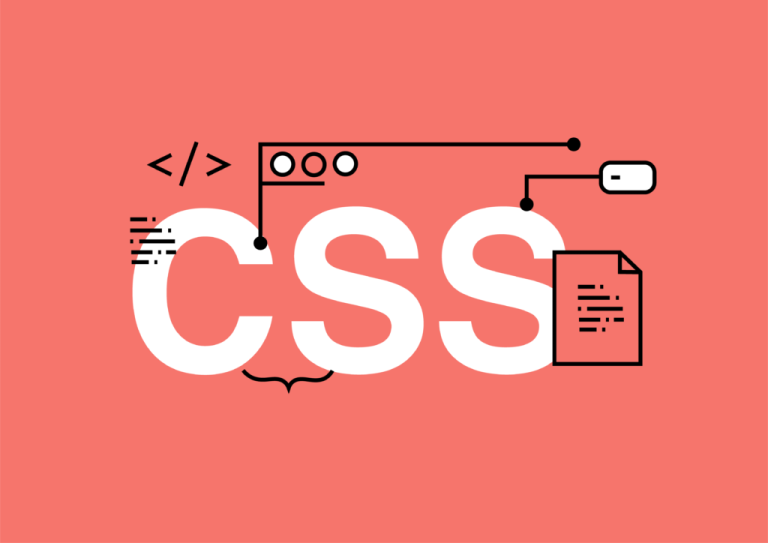In this guide, we’ll explore the most exciting CSS features that every developer should be familiar with in 2025.
Fire up your favorite code editor—let’s dive in!
✅Native Popovers with the Popover API
CSS now lets you create interactive popovers—like tooltips, modals, or dropdowns—without writing any JavaScript. This is made possible by the new Popover API.
How It Works
You need two elements:
- A trigger (e.g., a button)
- A popover container (e.g., a
<div>)
Use the popover attribute on the element you want to display, and popovertarget on the trigger.

Clicking the button displays the popover. It can be dismissed by pressing Escape or clicking outside the element.
Adding Animation✍️
To create smooth transitions, use CSS transitions:

✅ Smoother Animations with @starting-style
The @starting-style rule allows you to define how an element should look before a transition begins, resulting in smoother entry animations.
Without this, CSS jumps directly to the final state, making animations feel abrupt.
Example

Now the popover gracefully transitions into view rather than appearing suddenly.
✅ Interpolating Size Keywords
CSS now supports smooth transitions between size values like auto, min-content, and max-content. Previously, transitions were only possible with fixed numeric values.
This feature enables animations between flexible values—for example, height: 0 to height: auto.
Enabling the Feature ✍️
Set the new property at the root level:

Example


When you expand the <details>, the content smoothly grows to its natural height.
✅ Responsive Inputs with field-sizing
The new field-sizing property enables input fields, textareas, and select elements to resize automatically based on their content—no JavaScript required.
Usage

Example

Fields will now expand or shrink dynamically as users type or make selections, making your forms more responsive and user-friendly.
✅ Simplified Theme Switching with light-dark()
Handling light and dark modes used to require separate CSS classes, media queries, or JavaScript. Now, the light-dark() function simplifies this process.
Example

- In light mode: black text on a white background.
- In dark mode: white text on a black background.
No more media queries or custom toggling logic—just a clean one-liner.
These new CSS features are game-changers, reducing the need for JavaScript and simplifying responsive, interactive UI development. From popovers and dynamic input fields to native theme switching, 2025 is shaping up to be a powerful year for CSS.
Happy coding🚀




